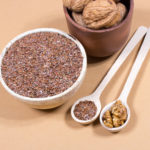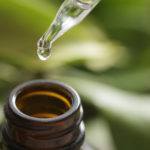Storing Enough Vitamin D?
Can you tell me if the vitamin D you get from sun exposure during the summer is stored in the body for use in winter months when sunlight is less available? Also, should African-Americans use sunscreen since it blocks the ultraviolet rays needed for the body to make vitamin D?
Andrew Weil, M.D. | July 28, 2016

Most adults are not getting enough vitamin D, which we need for bone health and, more and more research suggests, for protection against a number of diseases including many types of cancer. We get vitamin D from fortified milk and cereals as well as from eggs, salmon, tuna, mackerel and sardines, and our bodies make it with exposure to sunlight. Unfortunately, many people don’t get optimal sun exposure, particularly in northern latitudes during the gray winter months. In addition, sunscreen blocks vitamin D synthesis in the skin, and dermatologists have made us so fearful about UV damage to skin that many people don’t get enough direct exposure to sunlight regardless of where they live.
As you probably know, darkly pigmented skin isn’t efficient at inducing the synthesis of vitamin D. This isn’t a problem in Africa where there’s plenty of sun, but it often translates into vitamin D deficiency in areas of the world where sunshine is more limited. Fortunately, if you get enough sun exposure in the summer, your body will make and store enough D to get you through the winter. This doesn’t work as well if you’re obese because body fat holds onto vitamin D tenaciously and doesn’t release it efficiently,says Michael Holick, Ph.D., M.D., an expert at Boston University.
Even if you are black and need sunscreen, you should spend at least a half hour in the sun before you apply it, advises Dr. Holick, whose book, The UV Advantage (iBooks, 2003), provides tables showing how much sun exposure you need for adequate vitamin D synthesis, depending on your skin type, the season of the year, time of day, and where you live. For example, if you’re African-American and live in Boston, New York or San Francisco, adequate exposure equals 25 to 35 minutes a day in the sun between the hours of 11 a.m. and 3 p.m., from June through August. After that time, apply sunscreen.
Because so many people don’t get sufficient vitamin D from sun exposure or their diets, I recommend a daily supplement of 2,000 IU. Use the D3 form (cholecalciferol) and take it with a fat-containing meal to ensure absorption. There are no concerns about toxicity with this dose of supplemental vitamin D (the body will make 10,000 to 20,000 IU per day with moderate exposure to the summer sun).
Andrew Weil, M.D.









